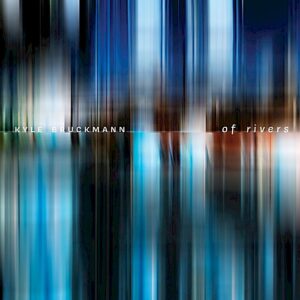Kyle Bruckmann: of rivers (Recording review)
Kyle Bruckmann
of rivers
New Focus Recordings
Oboist, composer, and electronic musician Kyle Bruckmann is a dedicated advocate for contemporary concert music. One of the founding members of Splinter Reeds, he currently plays in a number of ensembles in the San Francisco Bay area, including sfSound, San Francisco Contemporary Players, and the Stockton Symphony. Bruckann teaches oboe and contemporary music at University of the Pacific.
On his latest recording, Bruckmann programs a number of pieces that incorporate wildly challenging extended techniques and, in some, electronics. Bruckmann’s own Proximity, Affect features the latter, as well as deconstructed instruments. Thrumming bass and harmonics derived from it, succeeded by scraps of bleeps, bespoke instrumental interjections, and white noise open the work. Gradually, a bass passage an octave higher is introduced, along with a steady stream of repetitions. It is distressed by snippets of the middle’s material. The big bass returns only to have its ostinato hijacked by a percussive variant.
Jessie Cox’s AT(ou)M is a festival of multiphonics, microtones, and altissimo register playing. Its concept is the exploration of resonant spaces. The reverb imparted to the oboe attacks makes a point of this. Its concomitant idea is the exploration of the silences between attacks as they decay. This is an important component, as it invites the listener to hear the piece as more than its sounds, to experience slices of time with minimal transitions. Cox is a thoughtful composer, and AT(ou)M is a signature example of this. Here, as elsewhere, Bruckmann displays consummate technical skill, even in the most challenging elements of the score.
Hannah A. Barnes samples the oboe, put through a vocoder, and uses this material for the electronics part of Dis/inte/gration. The title is a good clue, as the piece begins with the foundational gesture of the tuning pitch, gradually moving away from it in sinuous scalar passages and angular leaps. The electronics arrive and begin to augment the proceedings with sounds that range from low octave grumbles to a choir of oboe glissandos. Its conclusion is described by Barnes as, “exacting change, and forcing the material to collapse in on itself, a ‘bacteria of voices.’”
Helen Grime used to be an oboist herself, and Arachne (spider) displays her familiarity with the instrument, particularly in her awareness of how note choices and the use of various fingerings abet artful lines. The piece has an incantatory quality, with beguiling ascending runs and cascades of trills – all seeming to weave a web of modernist counterpoint. An insistent upper note becomes an idée fixe, only to dissolve in the piece’s denouement.
Drop by Linda Bouchard, for solo improviser and electronics, starts off with howling high notes, soon to be followed by water sounds: droplets, waves, and ice breaking, which are juxtaposed with terse rejoinders from the oboe. In one of the best moments, fleet runs directly respond to the flurries of rainwater in the electronics. Drop is an example of an organic use of sampling, and Bruckmann’s response to the recorded sounds is well-considered and abundantly chops-laden.
Christopher Burns prefers to work closely with the interpreters’ of his music, creating a personal, collaborative experience as part of a composition’s gestation. The Mutiny of Rivers is written for EKG, Bruckmann’s duo with electronics musician Ernst Karel. Karel usually employs analog electronics, while Burns works in the digital domain. The composer combines both of these, and Bruckmann plays English horn, playing both composed and improvisatory passages. This agglomeration of elements proves to be the best of all worlds, with Karel’s analog instruments, typifying EKG’s “slowly unfolding textures and timbral nuances,” and Burns’s digital “spiky and multi-layered aesthetic,” combine in an intricate sound palette of microtones, timbral variety, and glissandos. Bruckmann, in turn, uses an instrument with additional low notes, yet plays in the altissimo register with aplomb.
Burns also intends The Mutiny of Rivers to contain puzzles and even traps. One is that he gives Karel six tracks of sampled audio to use, some of which may be chopped or suppressed in performance. With versatile approaches and abundant aleatory, one can readily hear this as a playfully earnest way to provide a measure of trapeze walk to the piece. Burns cites Luigi Nono’s La Lontananza Nostalgica Utopica Futura as a totem work and although The Mutiny of Rivers contains its own panoply of sounds, the shared intent is manifest.
Bruckmann’s of rivers is a formidable and satisfying recording, one of my favorites thus far in 2024.
-Christian Carey
